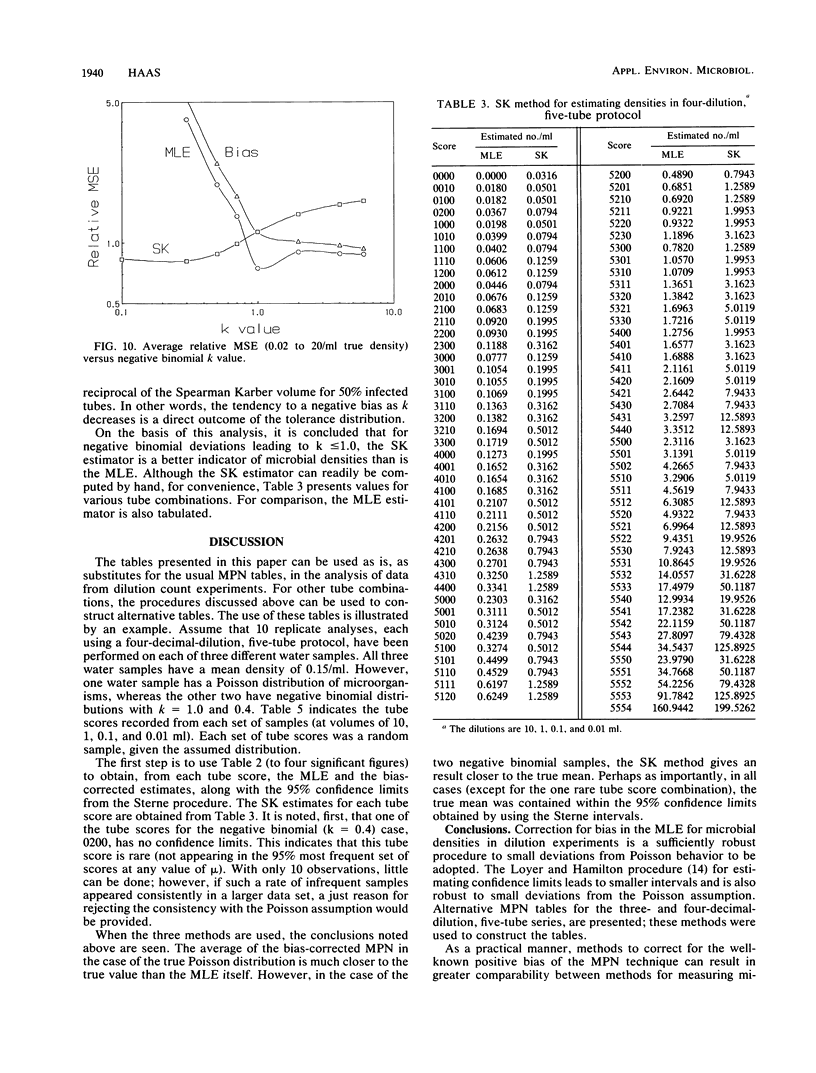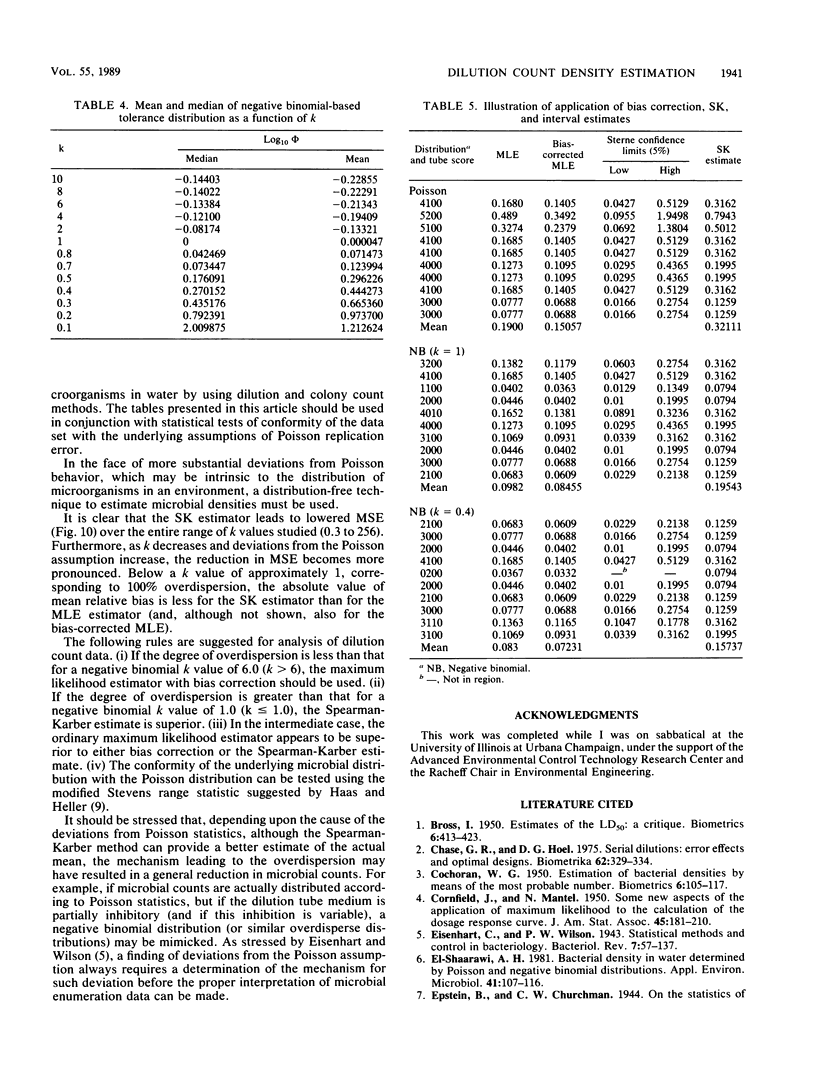Abstract
Although dilution counts have been widely used in quantitative microbiology, their interpretation has always been widely discussed both in microbiology and in applied statistics. Maximum-likelihood (most-probable-number) methods hae generally been used to estimate densities from dilution experiments. It has not been widely recognized that these methods are intrinsically and statistically biased at the sample sizes used in microbiology. This paper presents an analysis of proposed method for correction of such biases, and the method was found to be robust for moderate deviations from Poisson behavior. For analyses at greater variance with the Poisson assumptions, the use of the Spearman-Karber method is analyzed and shown to yield an estimate of density of lesser bias than that produced by the most-probable-number method. Revised methods of constructing confidence limits proposed by Loyer and Hamilton (M.W. Loyer and M.A. Hamilton, Biometrics 40:907-916, 1984) are also discussed, and charts for the three- and four-decimal dilution series with five tubes per dilution are presented.
Full text
PDF








Selected References
These references are in PubMed. This may not be the complete list of references from this article.
- BROSS I. Estimates of the LD50; a critique. Biometrics. 1950 Dec;6(4):413–423. [PubMed] [Google Scholar]
- COCHRAN W. G. Estimation of bacterial densities by means of the "most probable number". Biometrics. 1950 Jun;6(2):105–116. [PubMed] [Google Scholar]
- Eisenhart C., Wilson P. W. STATISTICAL METHODS AND CONTROL IN BACTERIOLOGY. Bacteriol Rev. 1943 Jun;7(2):57–137. doi: 10.1128/br.7.2.57-137.1943. [DOI] [PMC free article] [PubMed] [Google Scholar]
- El-Shaarawi A. H., Esterby S. R., Dutka B. J. Bacterial density in water determined by poisson or negative binomial distributions. Appl Environ Microbiol. 1981 Jan;41(1):107–116. doi: 10.1128/aem.41.1.107-116.1981. [DOI] [PMC free article] [PubMed] [Google Scholar]
- Haas C. N., Heller B. Test of the validity of the Poisson assumption for analysis of most-probable-number results. Appl Environ Microbiol. 1988 Dec;54(12):2996–3002. doi: 10.1128/aem.54.12.2996-3002.1988. [DOI] [PMC free article] [PubMed] [Google Scholar]
- Loyer M. W., Hamilton M. A. Interval estimation of the density of organisms using a serial-dilution experiment. Biometrics. 1984 Dec;40(4):907–916. [PubMed] [Google Scholar]
- THOMAS H. A., Jr, WOODWARD R. L. Estimation of coliform density by the membrane filter and the fermentation tube methods. Am J Public Health Nations Health. 1955 Nov;45(11):1431–1437. doi: 10.2105/ajph.45.11.1431. [DOI] [PMC free article] [PubMed] [Google Scholar]
- WADLEY F. M. Limitations of the zero method of population counts. Science. 1954 May 14;119(3098):689–690. doi: 10.1126/science.119.3098.689. [DOI] [PubMed] [Google Scholar]


